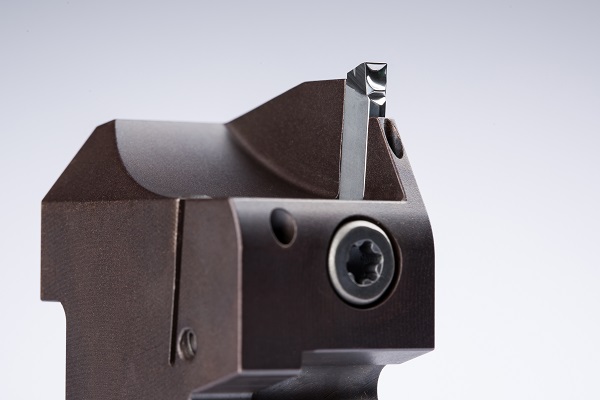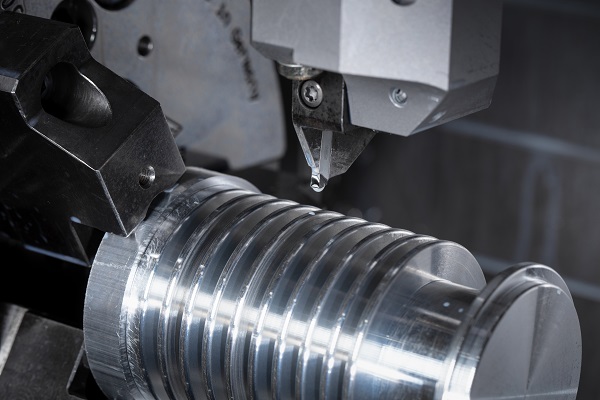Aluminium smelters worldwide produce over 60 million tonnes of the light metal each year. Global demand for this metal has risen sharply in recent years – not least due to dynamic development in Asia. China has the largest production output of aluminium, with over 30 million tonnes annually. After oxygen and silicon, aluminium is the third most common element on Earth, making up 8 percent. However, it does not occur in its pure form in the earth’s crust. Instead, the metal must be extracted from weathering products of lime and silicate rocks – bauxite.
The raw material for aluminium production has a high aluminium oxide content of over 50 percent. The Bayer process can be used to extract pure aluminium oxide from bauxite. However, this is still so fine that it behaves almost like a liquid. Only in the melt of the oxide and the mineral cryolite does the mixture break down into liquid aluminium and oxygen. This process is called fused-salt electrolysis.
Drilling, reaming, grooving and milling: Paul Horn GmbH offers a wide portfolio of optimised tools for economical machining of this light metal. We come into contact with aluminium (Al) on a daily basis: in packaging, cars, electronics and mechanical engineering. After steel, aluminium is the most commonly used metal. Aluminium alloys are used in virtually every area of technology and everyday life.
In manufacturing, Al alloys are one of the materials that are easy to machine. Nevertheless, it is possible for a hard spot to quickly occur when working the soft metal. Sticking, built-up edges, chip jams and even tool breakage can occur. But with the correct tools, cutting materials, cutting data and the right amount and type of coolant, Al alloys can be reliably machined.
Expert coordination
The tensile strength, elongation, hardness and rigidity of aluminium can all be influenced by alloying elements such as silicon, magnesium, copper, zinc and manganese. During machining, the material can become soft due to the heat generated, which can cause the cutting tool to stick, with the impaired chip flow even resulting in the tool being destroyed.
Therefore, it is important to ensure that the material and cutting parameters are properly matched to one other. The determining factors are the aluminium alloy, the cutting tool, the grade, the feed rate and rotational speed, and the type and quantity of coolant used.
Given the strong adhesive tendency of aluminium, the most important features of the Horn tool range, including standard and bespoke tools, are the special geometries with sharp cutting edges, polished rake faces and coatings with excellent anti-friction properties.
Moreover, our carbide grooving inserts are peripherally ground to ensure an extremely sharp cutting edge. To cope with aluminium alloys that have a high silica content, the cutting inserts are PVD-coated. For milling applications, the portfolio includes circular interpolation tools with coated or uncoated inserts and solid carbide milling cutters.
To handle the considerable chip volume associated with high cutting data, single-edged milling cutters with a large chip space can also be used. To support long periods of use or more complex tasks, ultra-hard cutting materials are available, such as PCD and CVD-D with laser machined cutting edges and chipbreaker geometries. MCD-tipped tools are used, for example, for brilliant-finish machining of mirrors or aluminium blow moulds.
Grooving with polished rake faces
One machining example is the grooving of cooling fins on a pump housing used in the medical sector. The material was an aluminium alloy with a low silicon content that is difficult to machine, as it is long-chipping and causes built-up edges to form. In order to solve the problems, the Horn engineers opted for the S224 grooving system with FY and WA chipbreaker geometries. To hold the cutting inserts, holders are used with a clamping cartridge and internal coolant supply via the clamping finger and through the support.
Cooling ribs and a wide groove are rough-machined using FY geometry. The form of the geometry enables controlled chipbreaking and the coolant pressure prevents the chips from fusing on the insert surface. The special WA aluminium grooving geometry ensures a high level of surface quality on the component when finishing the grooves. The polished chipbreaker geometry serves to counteract the formation of built-up edges whilst creating small, spiral chips, thereby ensuring good chip control and a high level of process reliability.
Tools with monocrystalline diamonds are used to produce the highest surface quality on workpieces made of aluminium or other non-ferrous alloys. The range of applications for brilliant-finish machining is huge. In the tool and mould-making industry in particular, the method saves polishing, while also increasing the quality of the surface and its flatness. It is therefore used in applications where the surface of the mould is reflected in the parts being produced.
For the machining of a wall mounted tap prototype, a user was tasked with looking into brilliant-finish machining. They received this task from a manufacturer of premium fittings. The clean geometry and flat surfaces of the prototype design require machining with MCD. Deviations in the surfaces and geometry would be visible through the subsequent chrome plating. Due to these quality requirements, polishing after machining was ruled out, as even slight irregularities in the surface would hugely affect the refraction of light in the chromium layer, which is only a few microns thick. They did not have much time to find the best solution to this machining task. The difficulty in machining the brass casting was the long projection length of around 200 mm (7.874"). Horn found a solution by using an MCD-tipped ISO cutting insert. The surface finish (Rz ≤ 0.01 μm) required by the valve manufacturer’s designers could then be achieved through strict quality control.
Due to its smooth surface and the resulting low adhesion tendency, as well as the high wear resistance, polycrystalline diamond (PCD) is also particularly suitable for machining aluminium alloys. In addition, the sharp cutting edges enable a high surface finish to be achieved. In addition to turning, the grade is also used for drilling. Thanks to the high cutting parameters that can be achieved, PCD-tipped drilling tools enable shorter process times and longer tool life compared to solid carbide drills. This is why PCD drilling tools are often used in series production; for example, for drilling aluminium wheel rims.

Mirror finish over the entire surface. Horn and DMG MORI use a moulded part to demonstrate their expertise in brilliant-finish machining of aluminium. Source: Horn/Sauermann

The polished WA chipbreaker geometry enabled problems of long chips and built-up edges during aluminium machining to be resolved. Source: Horn/Sauermann

High surface quality despite a long overhang when drilling aluminium rims. Source: Horn/Sauermann

Aluminium cooling fins were to be cut for a pump in a medical device - a challenge that had to be met reliably with suitable tools and know-how. Source: Horn/Sauermann
Source: Hartmetall-Werkzeugfabrik Paul Horn GmbH

 iConnectHub
iConnectHub
 Login/Register
Login/Register Supplier Login
Supplier Login


























